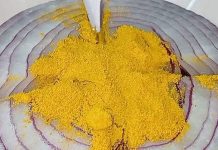The Perils and Promise of Cassava: An In-Depth Exploration
Cassava, also known as manioc or yuca, is a root vegetable that serves as a critical staple for over 500 million people around the globe, particularly in tropical regions. Its impressive ability to thrive in poor soils and withstand drought makes it a reliable food source in many developing countries, especially across Africa, Asia, and South America. Yet, despite its widespread consumption and agricultural significance, cassava has a dark side that has earned it the notorious title of the “world’s deadliest food.” This article aims to delve deeper into the complexities surrounding cassava, its nutritional value, associated risks, and the essential methods of preparation that ensure its safety.
The Nutritional Landscape of Cassava
Cassava is primarily composed of carbohydrates, making it an excellent source of energy. It is particularly rich in starch, which constitutes about 30-40% of its composition. However, it is crucial to note that cassava is relatively low in protein, vitamins, and minerals, which raises nutritional concerns, especially in regions where it is a primary food source. Given this low nutrient profile, relying solely on cassava can lead to severe deficiencies over time, particularly of essential nutrients like vitamin A, iron, and protein. For instance, communities that predominantly consume cassava may be at risk of conditions like anemia and other serious health issues that are linked to nutritional deficiencies.
Despite these nutritional challenges, cassava does contain small amounts of dietary fiber and is a source of vitamin C when consumed in its fresh form. The presence of antioxidants in cassava has also garnered attention; they help combat oxidative stress in the body. However, the health benefits of cassava can only be realized when it is prepared correctly to eliminate harmful compounds. It is worth noting that while cassava’s healthy properties may seem beneficial, the imbalance in its nutritional profile emphasizes the importance of dietary diversity.
The Toxicity of Raw Cassava
The major concern with cassava lies in its natural production of cyanogenic glucosides, particularly in the bitter variety, which can convert to hydrogen cyanide when the plant parts are damaged. Consuming raw cassava or improperly processed cassava can lead to acute cyanide poisoning, resulting in symptoms such as headache, dizziness, vomiting, and, in severe cases, death. The World Health Organization estimates that approximately 200 fatalities occur each year due to cassava-related poisoning, emphasizing the gravity of this issue. This alarming statistic serves as a stark reminder of the need for education and awareness regarding cassava preparation.
In addition to acute poisoning, chronic exposure to cyanide from inadequately processed cassava can lead to long-lasting health issues. One such condition is konzo, a neurological disorder that results in paralysis of the legs and is often observed in regions that rely heavily on bitter cassava as a dietary staple. This condition is particularly prevalent in impoverished areas where protein intake is low, thereby exacerbating the harmful effects of cyanide exposure. Anecdotal evidence indicates that families in these regions often lack the resources or knowledge needed to process cassava safely, further perpetuating the health crisis.
Traditional Preparation Methods: A Lifesaver
Given the inherent risks associated with cassava, proper preparation is vital for safe consumption. Traditional methods have been developed over centuries to mitigate the dangers posed by cyanogenic compounds. One common technique involves soaking cassava roots for 24 hours in water, which can significantly reduce the cyanide content. Fermentation and cooking are also effective processes that further detoxify cassava, rendering it safe for human consumption.
In many cultures, cassava is grated, fermented, and sometimes even dried before cooking, which not only enhances safety but also improves the flavor and texture of the final dish. For instance, the popular dish of fufu, made from fermented cassava, is a staple in many West African countries and is enjoyed for its nutritional and culinary merits. In Brazil, cassava is processed into farinha, a flour-like substance used in various dishes. These traditional practices underscore the importance of cultural knowledge and food safety, which have been passed down through generations. Modern innovations, such as the development of cassava processing machines, are also helping communities improve the safety and efficiency of cassava preparation.
The Socioeconomic Dimensions of Cassava Consumption
Cassava plays a multifaceted role in the socioeconomic landscape of various regions. In countries where food security is a pressing issue, cassava is often seen as a ‘last resort’ food source during times of famine or military conflict. This dependence can lead to situations where individuals consume improperly prepared cassava, resulting in tragic consequences. For example, during the Venezuelan crisis, reports surfaced of people resorting to eating poorly processed cassava while facing severe food shortages, leading to numerous poisoning incidents. This scenario exemplifies the dire need for nutrition education in crisis situations.
Moreover, cassava is not just a food source; it is also a cash crop that supports the livelihoods of millions of farmers. In many regions, cassava cultivation provides income and sustenance, reinforcing its status as a vital agricultural product. The crop is often intercropped with other staples like maize or beans, contributing to food security and economic resilience. Nevertheless, the dual nature of cassava—as both a source of nutrition and a potential health risk—highlights the need for comprehensive education on its safe preparation and consumption. Organizations like the Food and Agriculture Organization (FAO) are actively working to promote safe processing techniques and sustainable farming practices to ensure that cassava can be both a food and income source.
Conclusion: Balancing Risks and Rewards
In conclusion, cassava stands as a remarkable example of a food that embodies both promise and peril. Its widespread use as a staple food reflects its agricultural viability and cultural significance, particularly in regions where food insecurity is rampant. However, the associated risks of cyanide poisoning cannot be overlooked, making it imperative that communities understand the importance of proper preparation methods to ensure safety. Educational outreach and community-level interventions are essential for changing perceptions about cassava and empowering individuals with knowledge about safe consumption practices.
As we move forward, enhancing public awareness and education on the safe consumption of cassava will be crucial in combating the negative impacts of its toxicity. By focusing on traditional knowledge and modern agricultural practices, we can harness the full potential of cassava as a reliable food source while minimizing the risks linked to its consumption. Ultimately, understanding cassava’s unique position in the global food system is essential for addressing both nutritional needs and public health concerns, paving the way for a safer and more nutritious future.

















